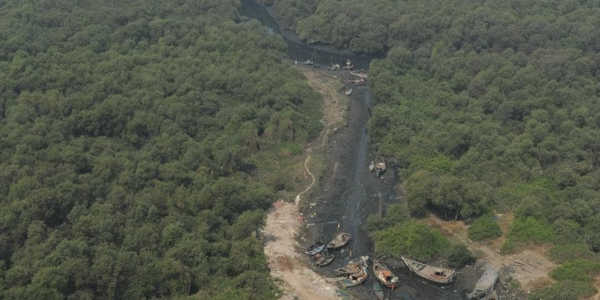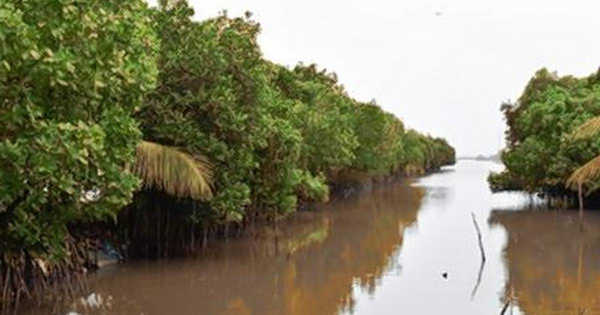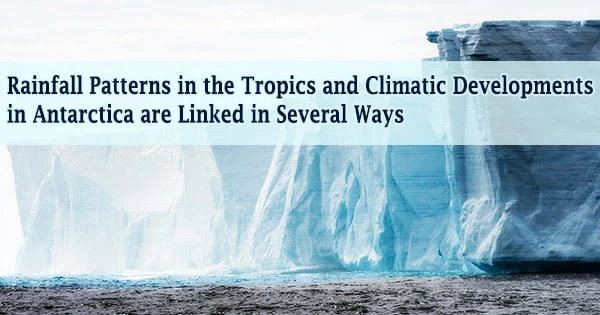A new paper published by an East Carolina University researcher in the Department of Coastal Studies sheds light on the impact of man-made infrastructure and natural topography on coastal wetlands following major storm events. The study, led by assistant professor David Lagomasino and conducted in collaboration with NASA and Florida International University, was published in the July issue of Nature Communications.
The research focused on the effects of Hurricane Irma, which hit Florida in 2017 and destroyed the state’s mangrove forests. The research team discovered that the forests experienced unprecedented dieback following the major hurricane. Mangrove forests are frequently damaged after hurricanes, but according to Lagomasino, forests in Florida have shown great resilience in the past due to their structure, location, and species composition. The forests did not recover at the same rate after Hurricane Irma. Following the storm, nearly 11,000 hectares—an area larger than 24,000 football fields—showed evidence of complete dieback.
That’s a major concern for a resource that saves the state more than $11 billion in property and flood damage each year, according to Lagomasino. “There have been significant storms in the past that have caused damage,” Lagomasino said. “However, Irma appears to have caused one of the largest areas of dieback, at least in the satellite record.” The research team was able to pinpoint potential explanations for the dieback after studying satellite and aerial footage of the region. These explanations included human-made obstacles.
The study focused on the effects of Hurricane Irma, which struck Florida in 2017, and the damage it caused to the state’s mangrove forests. The research team found that the forests suffered unparalleled dieback after the major hurricane.
“Both man-made and natural changes in topography can affect the flow of water through an area,” Lagomasino explained. “Roads and levees, for example, can restrict or stop the flow of water between previously connected areas. The lack of water connection can result in extremes—extreme dry conditions and extreme wet conditions, both of which can be stressful on wetland vegetation that thrives in more stable conditions.”
According to the study, human-made barriers can increase the amount of time water stays on the surface, causing rapid degradation of fine root materials. When a storm surge is high and barriers obstruct water flow, saltwater ponding may increase.
These findings are critical not only for future storm planning in Florida but also for other coastal states such as North Carolina, according to Lagomasino.

“What we learned in Florida can be applied to North Carolina and other coastal regions,” said Lagomasino. “Our findings suggest that the elevation of the landscape, the connectivity of water across the landscape, and the height of storm surge can all be used to identify vulnerable areas.” In other words, low elevation areas that are disconnected or lack the ability to drain after flooding are more vulnerable to long-term damage.
“This is useful for understanding the resilience of North Carolina’s coastal forests and wetlands, and it may also be useful in predicting urban areas that may be less resilient to these extreme events.”
The study suggested changes that can be made to improve coastal resiliency in the future when facing severe weather events, including:
- Adding new metrics to the traditional hurricane rating system that account for storm surge and geology;
- Setting up field research stations in low-lying areas to aid in the identification of underrepresented physical and biological processes in vulnerable areas;
- Conducting regular coastal remote sensing surveys in order to monitor drainage basins and improve water connectivity; and
- Increasing freshwater flow to aid in the formation of new tidal channels.
“We hope that the information gleaned from our research will aid in the recovery process following storms,” Lagomasino said. “If these areas can be identified ahead of time, the disaster response can address issues in hard-hit areas much faster or reduce the impact ahead of time.”
“The main takeaway from this is that strong winds cause a lot of damage during hurricanes. However, the severity of the damage does not always correspond to the system’s ability to recover over time. Other factors, such as slight elevation changes in the coastal landscape and storm surge, play a significant role in how the ecosystem recovers or does not recover after the initial damage. Considering these factors ahead of hurricane season can help reduce long-term impacts in vulnerable communities.”
















